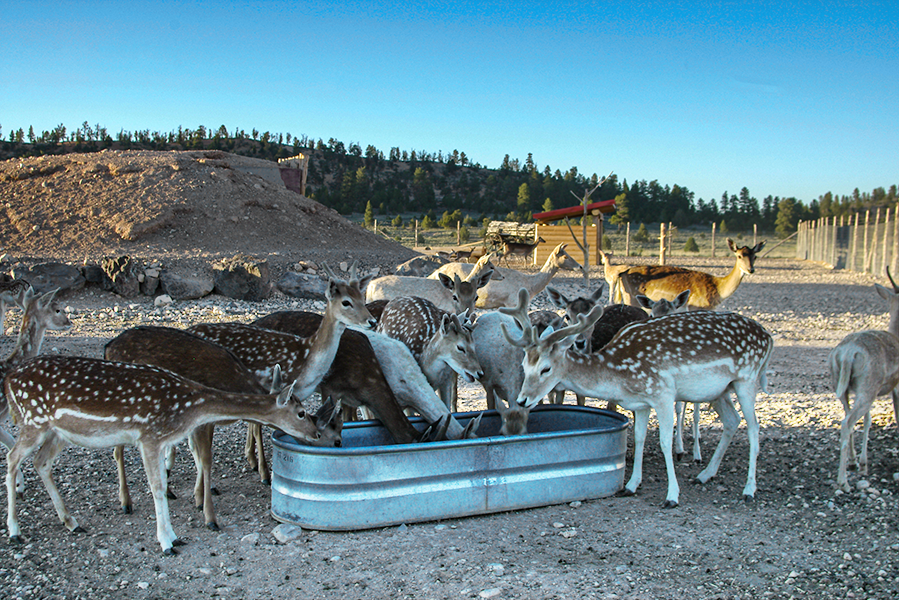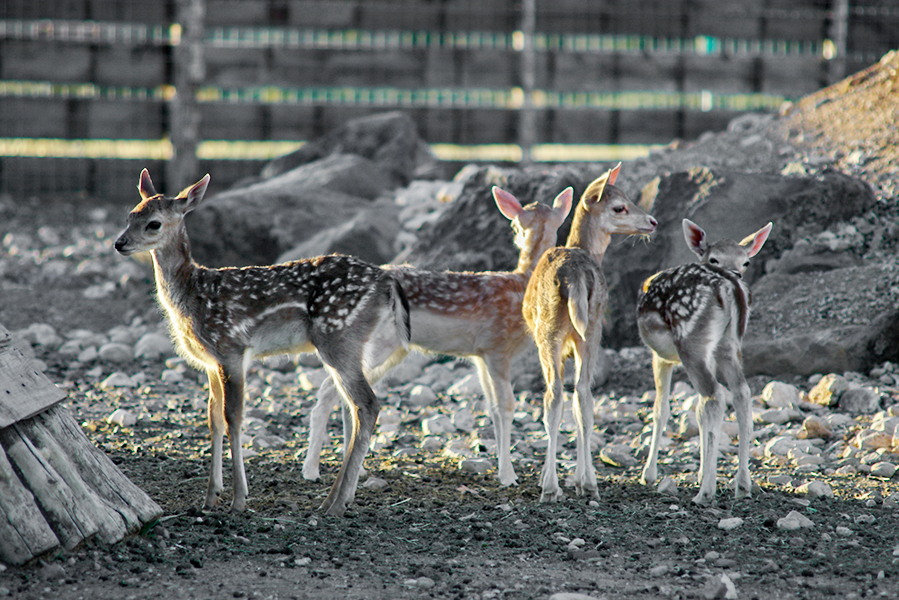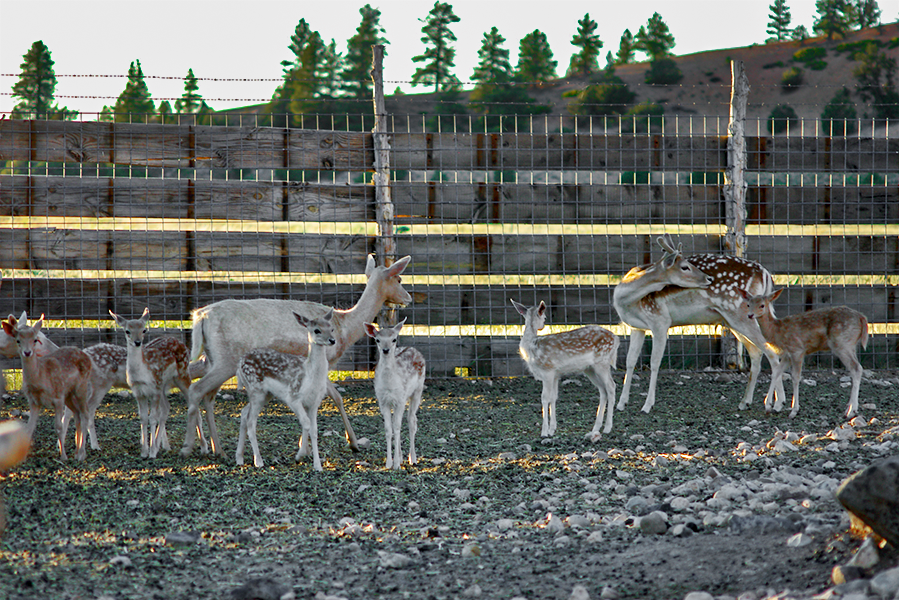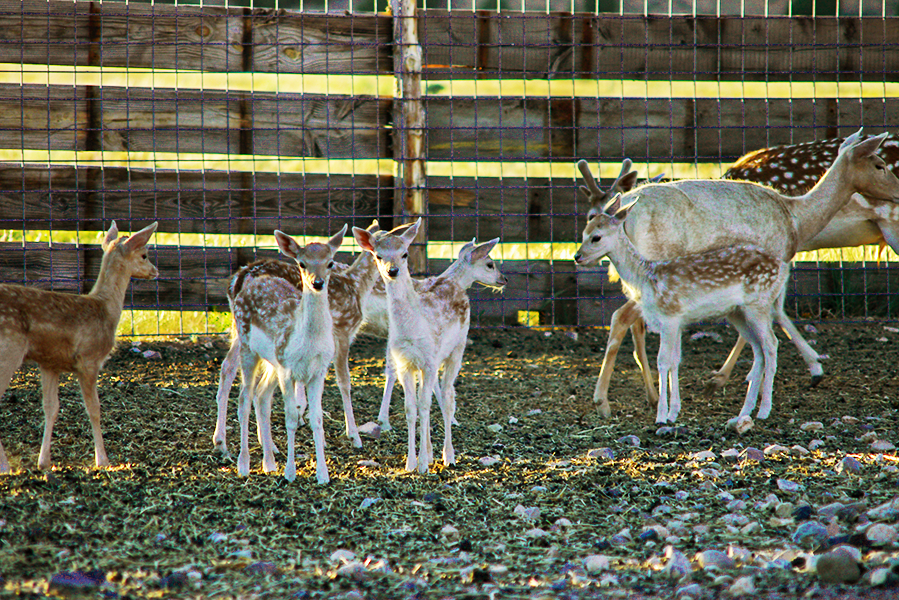Bryce Canyon Wildlife Conservation Museum





We invite you to hand-feed our Fallow deer
Since Fallow deer do not have upper incisors, feeding a fallow deer directly from your hand is a charming experience that highlights the animal’s curiosity and gentle demeanor. In our environment, these deer have become used to human presence, and they are pretty comfortable approaching people and accepting food directly from your hand.
Fallow deer (Dama dama) are a remarkable species of deer recognized for their elegant and variable appearance, their gentle behavior, and their historical significance in Europe and beyond. Native to the Mediterranean region, they have been widely introduced to other parts of the world for ornamental and hunting purposes, adapting well to diverse habitats ranging from woodlands to open grasslands. These deer exhibit a distinctive coat pattern with spotted variations that enhance their camouflage in natural environments, and their antlers, which are characteristically broad and branched in males, add to their striking visual appeal. Fallow deer have played an important role in art and literature for centuries, symbolizing both grace and nobility, and have been revered in various cultures for their beauty and elusive nature. Their social structure is organized into small herds, typically comprising females and their offspring, while adult males are often solitary except during the breeding season when competition for mates intensifies. The species is known for its adaptability, thriving in regions with varying climates and food sources, which has allowed them to become a permanent feature in many managed reserves and national parks. Conservation efforts continue to monitor their populations to ensure that their introduction into non-native ecosystems does not lead to ecological imbalance, while their management in captivity and wild settings offers valuable insights into sustainable wildlife management practices. As a subject of ongoing ecological and cultural interest, fallow deer represent an intriguing blend of natural beauty, adaptability, and historical legacy that continues to captivate wildlife enthusiasts, researchers, and artists alike, ensuring that their story remains intertwined with the landscapes they inhabit and the cultural traditions that celebrate their existence. Their resilience in adapting to changing environments, combined with continuous scientific research and community interest, has helped secure a bright future for this charismatic species.
